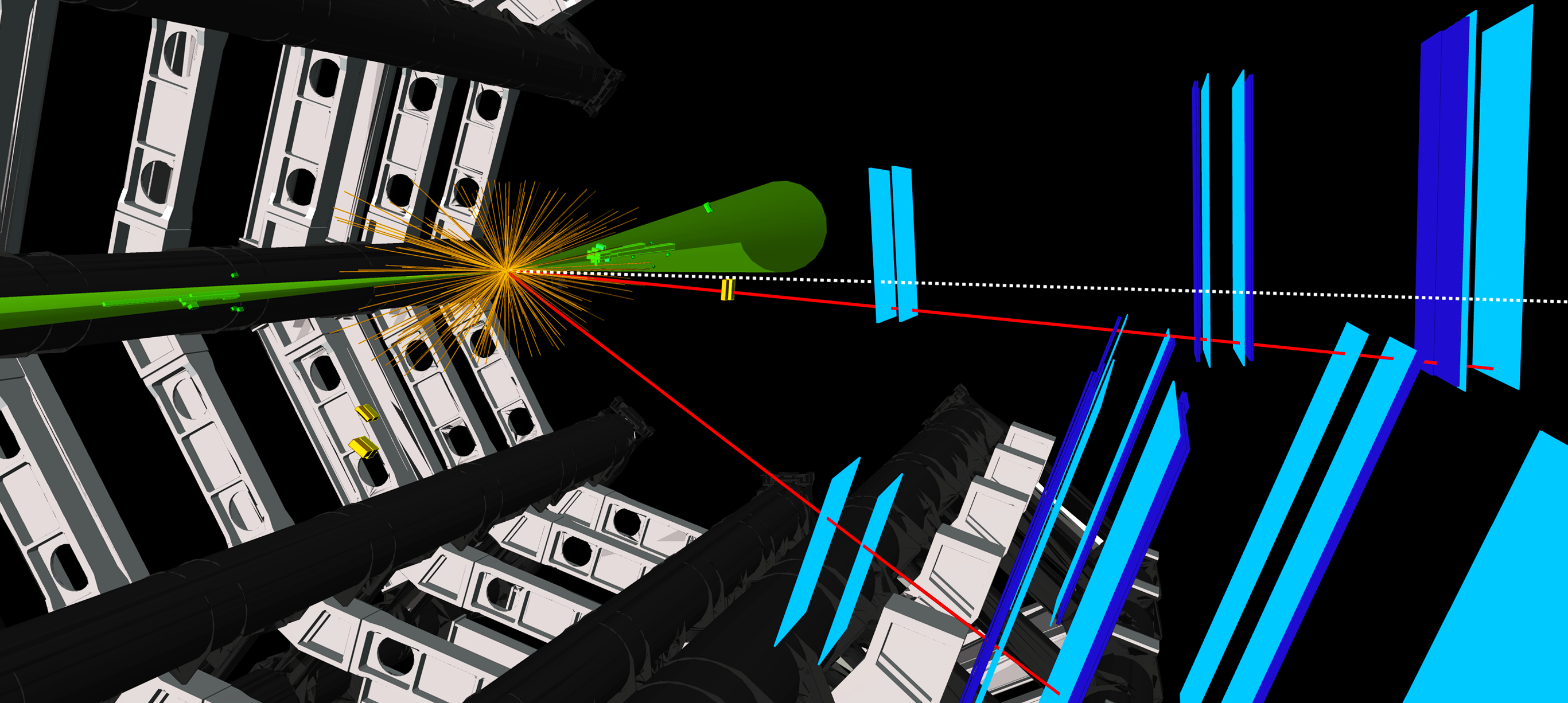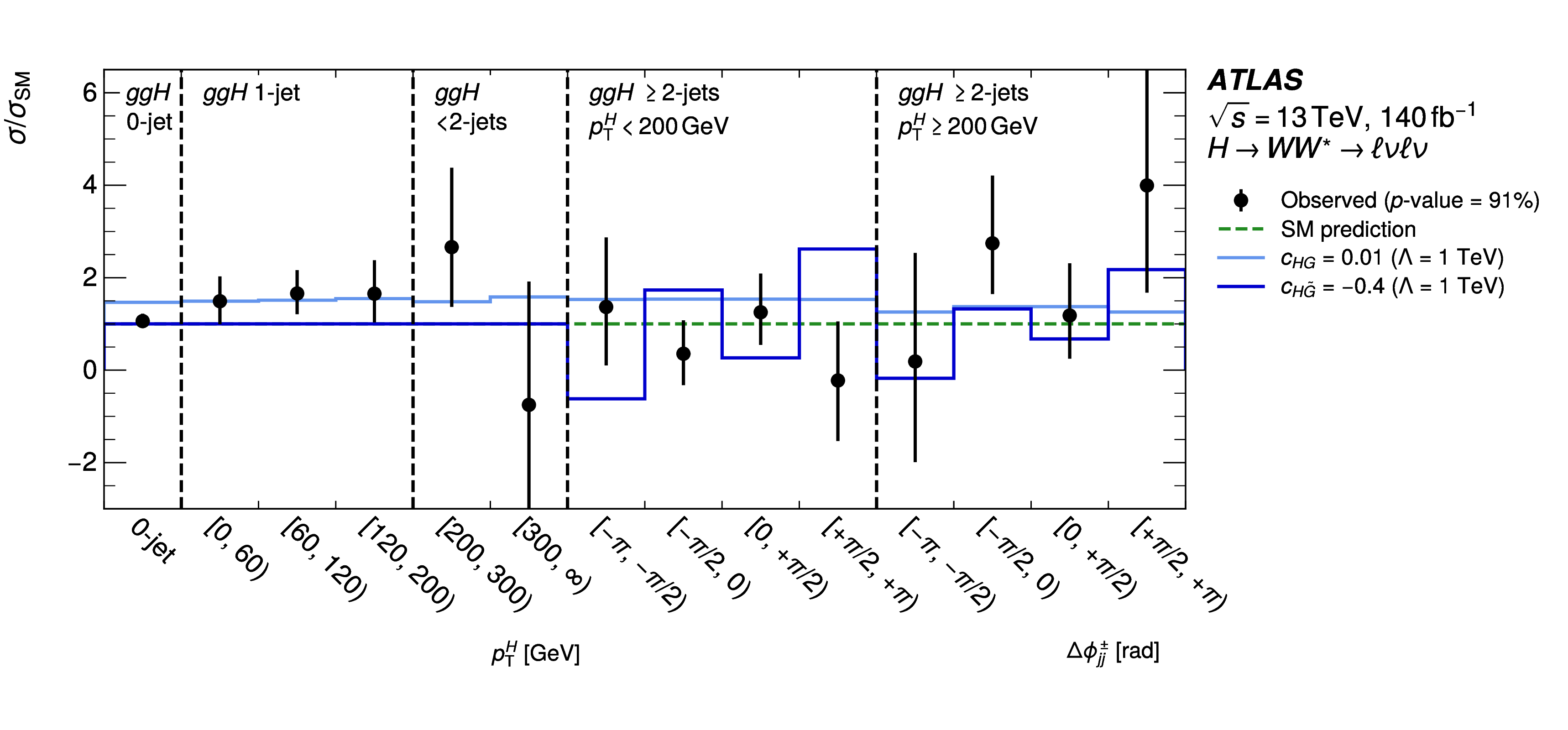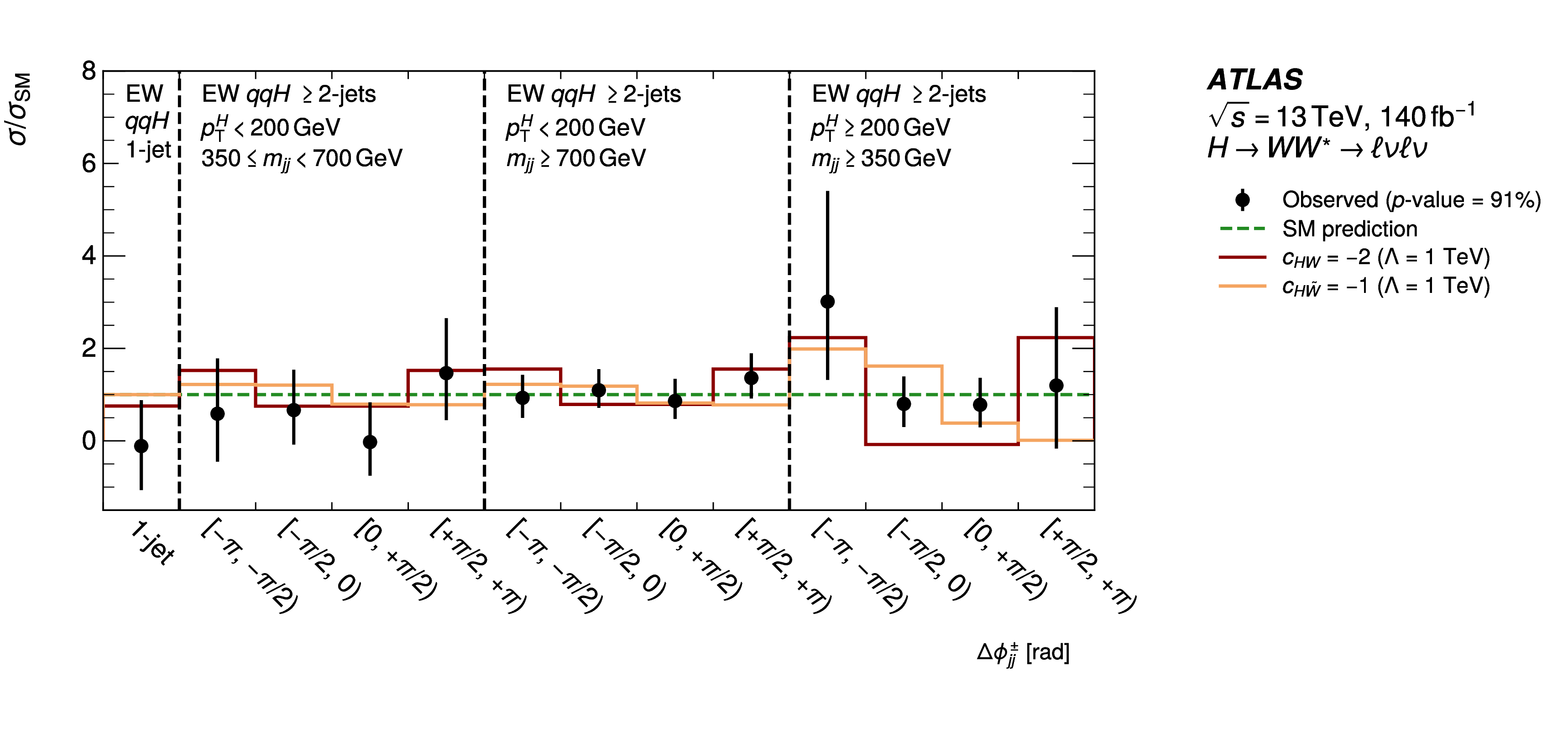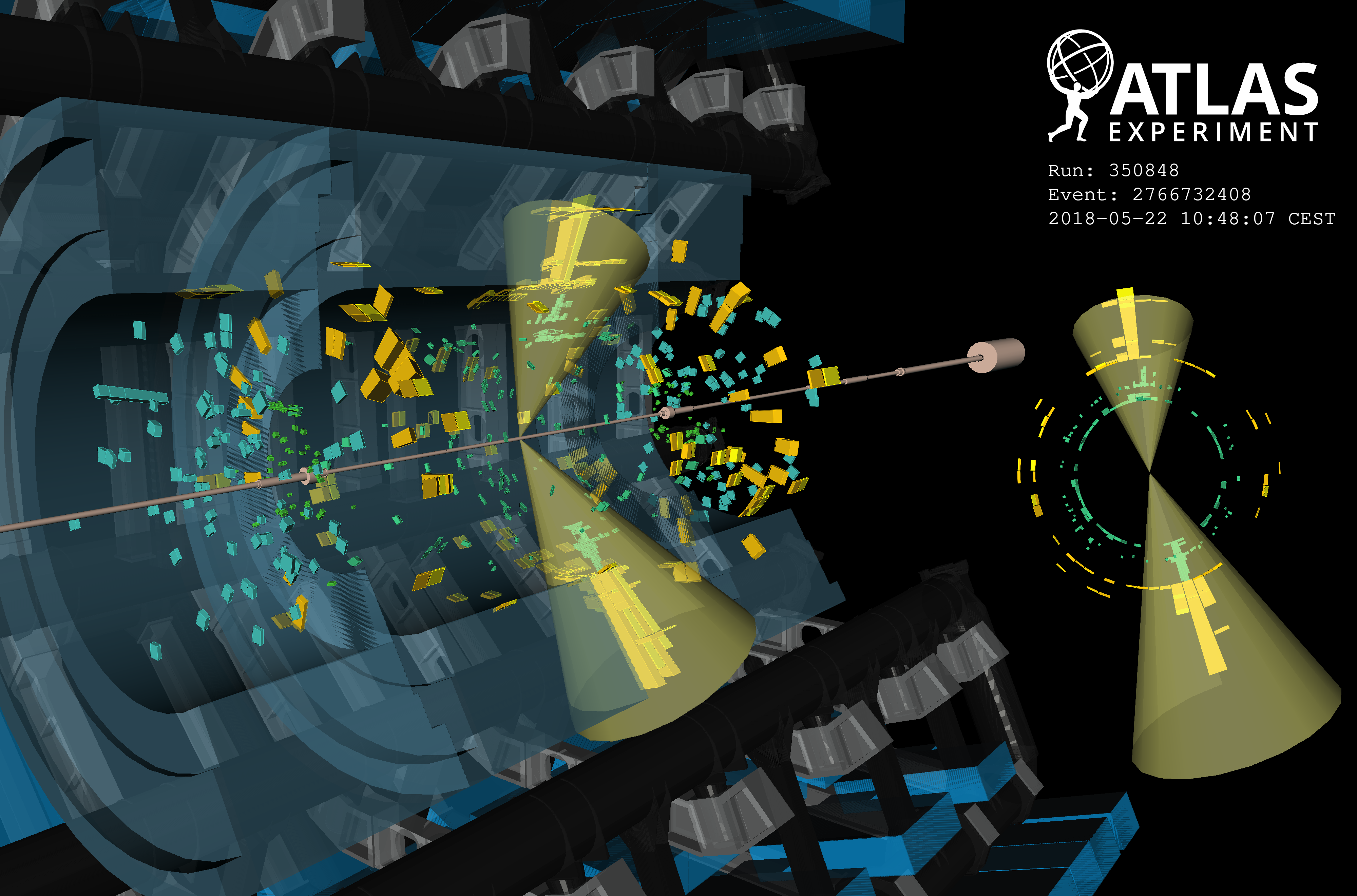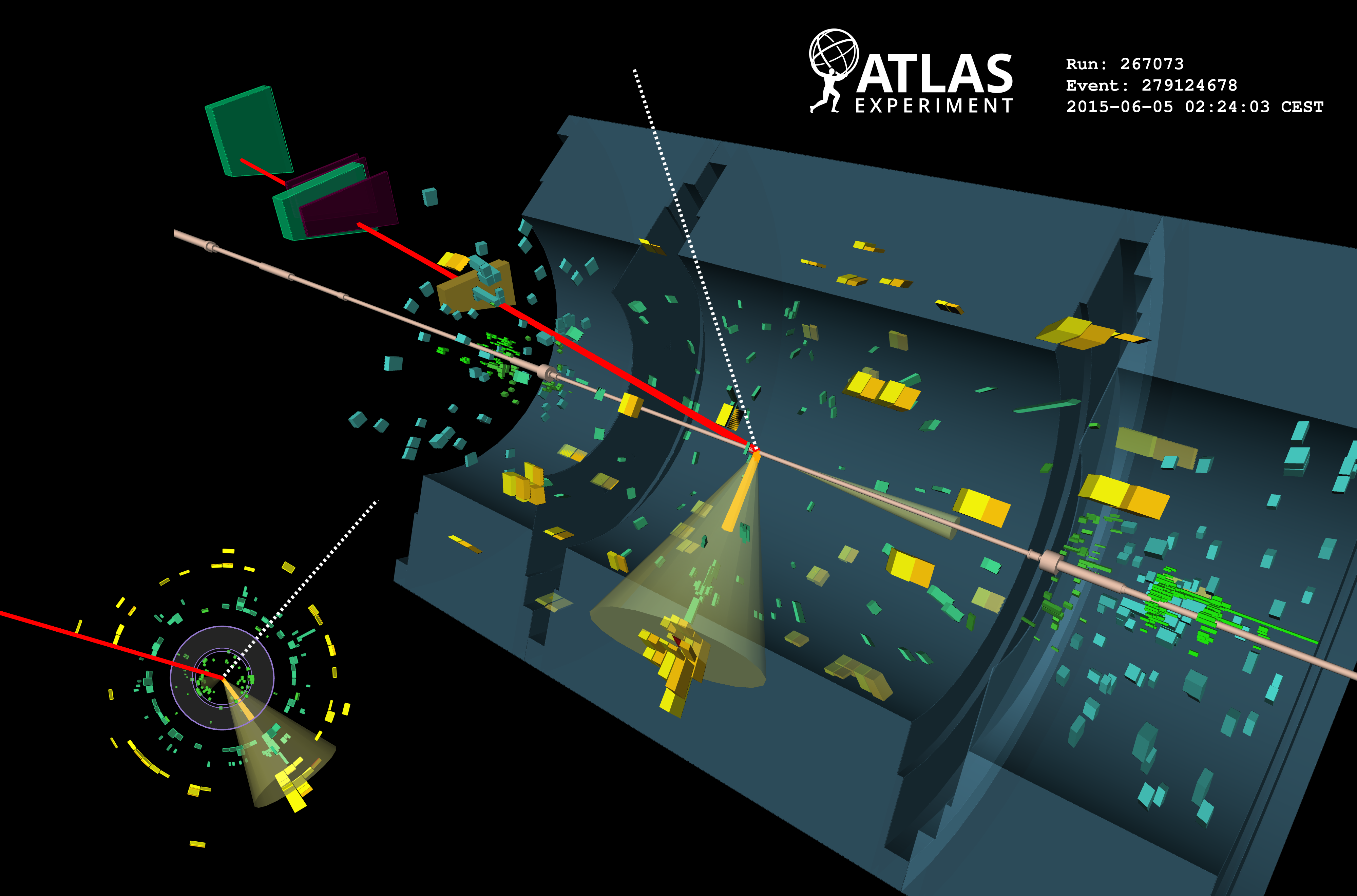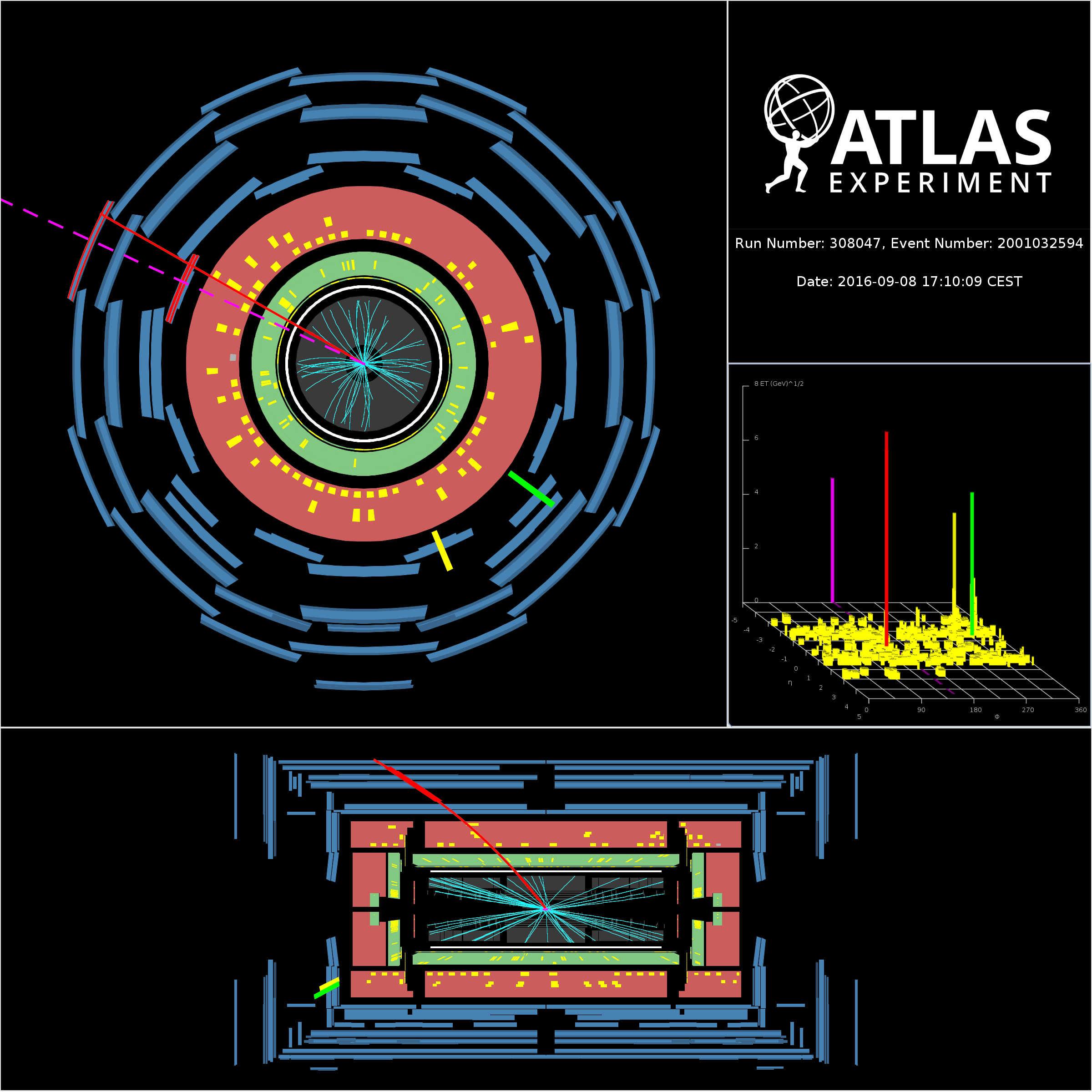Studying the Higgs boson across the scales
16 May 2025 | By
Since the Higgs boson's discovery in 2012, physicists have continued to explore its properties with increasing precision, revealing the inner workings of the Standard Model and probing for hints of phenomena beyond the Standard Model. The ATLAS Collaboration has now taken another step forward, presenting three new results that improve our understanding of how the Higgs boson behaves when it decays into pairs of W or Z bosons.
Using the full LHC Run 2 dataset (collected 2015 to 2018) and early Run 3 data (collected in 2022 and 2023), ATLAS physicists performed detailed measurements of Higgs-boson decays to W and Z boson pairs. Their new results provide insight into the Higgs boson’s total width – a fundamental parameter related to the Higgs boson’s lifetime – and probe for contributions from new physics phenomena at the highest possible energies.
“Simplified” measurements for complex results
One of the key questions in Higgs research is how often and under what conditions the Higgs boson is produced. To get a clearer picture, ATLAS physicists organise their signals into “simplified template cross section” (STXS) regions to study the Higgs boson’s production characteristics independently of its decay.
In a new result, ATLAS physicists performed detailed STXS measurements using the Higgs boson’s decay to two W bosons, which subsequently decay to two leptons (electrons or muons) plus two neutrinos (H→WW*→l𝜈l𝜈). Previous analyses focused exclusively on events with one electron and one muon, deliberately excluding same-flavor lepton pairs (two electrons or two muons) to reduce overwhelming non-Higgs backgrounds. Now, ATLAS scientists have taken on the challenge of this background. By incorporating these final states and using advanced machine learning techniques, they improved precision by 20% in STXS regions sensitive to new phenomena – particularly for Higgs bosons produced via vector boson fusion (VBF) – and by 10% for gluon-gluon fusion (ggF) production.
But precision tools like STXS can also be used for discovery. For the first time, researchers used the STXS framework to test charge-parity (CP) symmetry violation in the Higgs sector. The Standard Model doesn’t predict enough CP violation to explain the matter-antimatter asymmetry of the Universe, making it one of the fundamental unanswered questions in physics. The ATLAS Collaboration’s CP-sensitive STXS measurement is shown in Figure 1, alongside select beyond-Standard-Model scenarios that conserve or violate CP symmetry.
Off-shell studies probe the elusive width of the Higgs boson
In quantum field theory, particles can temporarily appear with rest energies that deviate from their expected mass, a behavior known as off-shell production. For the Higgs boson, this effect is crucial for probing its intrinsic width, tied to its fleeting lifetime of 10⁻²² seconds. With an expected width of 4.1 MeV, the Higgs width is far too narrow to be directly resolved by the ATLAS experiment – making off-shell measurements essential.
During Run 1 and Run 2, measurements of the Higgs-boson decay to Z-boson pairs led the way in studies of the Higgs boson’s natural width, as this decay leaves a clean and easily identifiable signature in the experiment. Using the Higgs-boson decay to W-boson pairs proved a tougher challenge, as the neutrinos escape ATLAS without leaving a trace and make the full picture hard to reconstruct.

Detecting off-shell Higgs production relies on a deficit of W-boson pairs produced, caused by quantum interference. Similar to the double-slit experiment, physics processes with the same initial- and final-state particles can enhance or cancel out each other. In decays to W-boson pairs, the off-shell Higgs signal interferes destructively with certain background processes with two W bosons, leading to a measurable dip in the mass distribution. In their new analysis, ATLAS researchers used a proxy for the di-boson invariant mass to pinpoint the region where this interference is the most pronounced. Additionally, they employed a deep neural network (DNN) to help separate the signal from non-interfering backgrounds.
The analysis was performed across six different channels, targeting the ggF and VBF production modes as well as various W-boson decay modes. After combining off-shell and on-shell measurements, researchers looked at the compatibility between the measured dataset and various values of Higgs width (see Figure 2). The best value for the width was measured to be 0.9+3.4 −0.9 MeV. This is consistent with the Standard-Model expectation of 4.1 MeV.
The new results provide insight into the Higgs boson’s total width – a fundamental parameter related to the Higgs boson’s lifetime – and probe for contributions from new physics phenomena at the highest possible energies.
Exploring the Higgs boson at 13.6 TeV

Studying the Higgs boson at 13.6 TeV with Run 3 data offers a vital opportunity to explore its properties at higher energies, enhancing the understanding of production mechanisms and potential deviations from the Standard Model. Building on first Higgs-boson measurements in the H→ZZ*→4l and H→γγ channels, researchers have now performed more detailed analyses using the larger dataset accumulated during the first two years of Run 3, with particular focus on the four-lepton channel.
New differential cross-section measurements explore how the Higgs boson is produced as a function of key kinematic variables like transverse momentum and rapidity. Comparing these distributions with theoretical predictions allows researchers to test the Standard Model with greater precision and look for signs of new phenomena. Additionally, categorising Higgs-boson events by production mode (identified through specific detector signatures) helps probe Higgs-boson couplings to vector bosons and fermions. These couplings, expressed as κ parameters, were previously constrained using 13 TeV Run 2 data. Now, for the first time, ATLAS researchers have combined results from both Run 2 and Run 3 (see Figure 3) to improve the limits on these parameters. This marks a key step forward in precision Higgs physics at the LHC.
Learn more
- Measurements of Higgs boson production via gluon-gluon fusion and vector-boson fusion using H→WW*→ℓνℓν decays in proton-proton collisions with the ATLAS detector and their effective field theory interpretations (arXiv: 2504.07686, see figures)
- Constraining off-shell Higgs boson production and the Higgs boson total width using WW→ℓνℓν final states with the ATLAS detector (arXiv: 2504.07710, see figures)
- Measurements and interpretation of the Higgs boson differential and production mode cross sections in the H→ZZ*→4l channel at 13.6 TeV with the ATLAS detector (ATLAS-CONF-2025-002)

